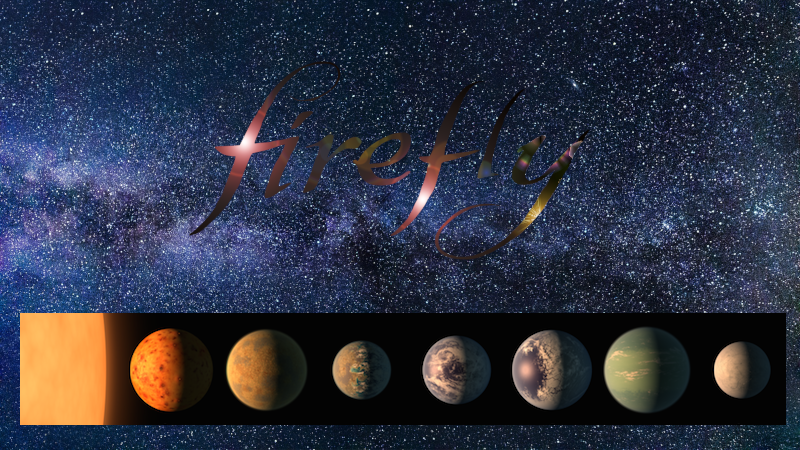Red Sun System
Astronomical Name: 34Tauri(2020)C
Common Name (Anglo): Red Sun
Common Name (Sino): Zhu Que ("Red Phoenix of the South")
Common Name (Anglo): Red Sun
Common Name (Sino): Zhu Que ("Red Phoenix of the South")
Show spoiler
XXXXXX
History
34 Tauri A was discovered in 2020, along with four other stars and fourteen gas giants nearby. It was located in the southeast quadrant of the constellation of Taurus, some 40 light-years from the Earth-That-Was solar system. As one of many star systems discovered during the mid-21st Century, it was almost forgotten until the ecological collapse of the late 21st. While a vastly different star in size, magnitude, and temperature from the sun, projections indicate that the system could support life. In the mid-to-late 21st century, after the failure of terraforming on Venus, Mars, and the Moon due to the immaturity of the process along with the lack of natural resources, the first Anglo-Sino Alliance formed. Its initial goal was to establish a colonization program to travel to a new star system. 34 Tauri (2020) was determined as the best candidate that could support habitable worlds and provide the materials necessary to carry out this resource-intensive task.Current Status
Show spoiler
YYYYY
Geography
Astronomical Statistics
Stellar Class: G5VRadius: 0.93 sols* = 646,815 km
Mass: 0.93 sols
Luminosity: 0.79 sols
Temperature: 5,610 Kelvin
Right Ascension*: 4h 26m 46.58s
Declination*: 16° 24' 40"
distance from Earth-That-Was: 40 light years [disputed] Bolometric Magnitude: 5.085
Apparent Magnitude*: 5.53
Temperature Color (RGB*): 255, 246, 233
Hill Sphere (radius): 25 AU = 3.74 × 109 km
Habitable Zone (HZ)
NoteThe Circumstellar Habitable Zone (often abbraviated CHZ or just HZ) is the theoretical limits in which a planet, moon, or other object orbiting a star can support liquid water on its surface, given sufficient atmospheric pressure.
Note: The values here are for a naturally occurring world given the stellar luminosity. In the 'Verse, the artificially manufactured worlds are able to overcome these values due to technological means. This also completely neglects the cumulative effects of the luminosities of the neighboring stars. Venusian: 0.64 AU
inner "hot" Earth: 0.72 AU
Earth-like: 0.89 AU
outer "cold" Earth: 1.28 AU
Martian: 1.35 AU
Protostars, Planets & Moons
Note: Helioformed protostar dwarfs indicated in ALL CAPS.Jupiter-class gas giants denoted by (J)
Asteroid belts denoted by asterisk (*)
- Jiangyin
- Tongyi
- Dangun
- Rhilidore
- New Melbourne
- Maria
- Destiny
- Motherlode (*)
- Greenleaf
- Dyton
- Agyar
- Bryson's Rock
- Harvest
- Farraday
- Higgins' Moon
- St. Albans
- Pi Gu
- Anson's World
- Spider
- Varley
- Steele
- Jubilee
- Covenant
- HIMINBJORG
- Aesir
- Bestla
- Borr
- Odin
- Moab
- Red Rock
- Mesa
- Brisingamen
- Freya
- Alberich
- Beowulf
- Anvil
- Hammer
- Aesir
- HEINLEIN
- Triumph
- Mycroft
- Paquin
- Shinbone
- Clawthorn
- Port Chester
- Lazarus
- Dora
- Silverhold
- Beggar's Tin
- Triumph
Alternative Name(s)
Zhu Que ("Red Phoenix of the South")
34Tauri(2020)C
34Tauri(2020)C
Type
Solar System
Location under
Included Locations
Capital: Jiangyin
Protostars: Himinbjorg, Heinlein
Gas Giants: (none)
Planets: 15
Moons: 29
Asteroid Belt: Motherlode
Population: 3.5 billion (est.)





Comments